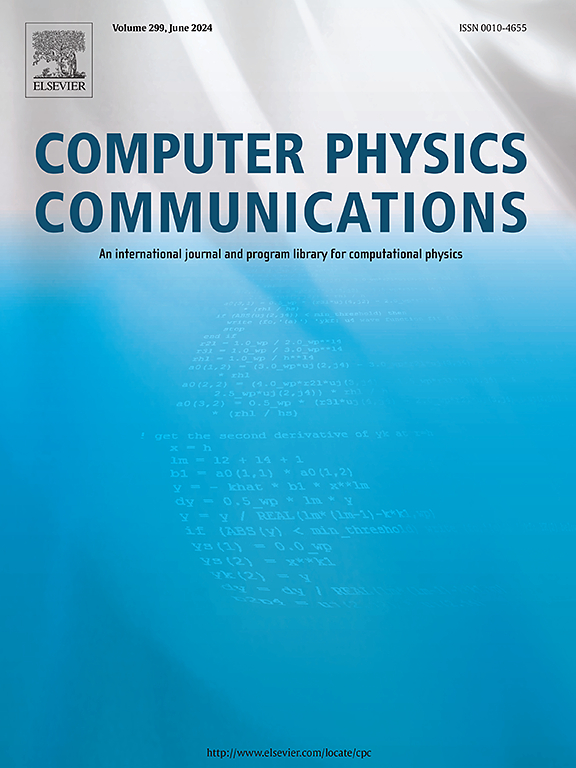Learning spatiotemporal dynamics from sparse data via a high-order physics-encoded network
IF 3.4
2区 物理与天体物理
Q1 COMPUTER SCIENCE, INTERDISCIPLINARY APPLICATIONS
引用次数: 0
Abstract
Learning unknown or partially known dynamics has gained significant attention in scientific machine learning (SciML). This research is mainly driven by the inherent sparsity and noise in scientific data, which poses challenges to accurately modeling spatiotemporal systems. While recent physics-informed learning strategies have attempted to address this problem by incorporating physics knowledge as soft constraints, they often encounter optimization and scalability issues. To this end, we present a novel physics-encoded learning framework for capturing the intricate dynamical patterns of spatiotemporal systems from limited sensor measurements. Our approach centers on a deep convolutional-recurrent network, termed Π-block, which hard-encodes known physical laws (e.g., PDE structure and boundary conditions) into the learning architecture. Moreover, the high-order time marching scheme (e.g., Runge-Kutta fourth-order) is introduced to model the temporal evolution. We conduct comprehensive numerical experiments on a variety of complex systems to evaluate our proposed approach against baseline algorithms across two tasks: reconstructing high-fidelity data and identifying unknown system coefficients. We also assess the performance of our method under various noisy levels and using different finite difference kernels. The comparative results demonstrate the superiority, robustness, and stability of our framework in addressing these critical challenges in SciML.
通过高阶物理编码网络从稀疏数据中学习时空动态
在科学机器学习(SciML)中,学习未知或部分已知的动态已经引起了人们的广泛关注。由于科学数据固有的稀疏性和噪声,对准确建模时空系统提出了挑战。虽然最近的物理知识学习策略试图通过将物理知识作为软约束来解决这个问题,但它们经常遇到优化和可扩展性问题。为此,我们提出了一种新的物理编码学习框架,用于从有限的传感器测量中捕获时空系统的复杂动态模式。我们的方法以深度卷积循环网络为中心,称为Π-block,它将已知的物理定律(例如,PDE结构和边界条件)硬编码到学习架构中。此外,还引入了高阶时间推进格式(如龙格-库塔四阶)来模拟时间演化。我们在各种复杂系统上进行了全面的数值实验,以评估我们提出的方法在两个任务中的基线算法:重建高保真数据和识别未知系统系数。我们还评估了我们的方法在不同噪声水平下和使用不同的有限差分核的性能。比较结果表明,我们的框架在解决SciML中的这些关键挑战方面具有优越性、鲁棒性和稳定性。
本文章由计算机程序翻译,如有差异,请以英文原文为准。
求助全文
约1分钟内获得全文
求助全文
来源期刊

Computer Physics Communications
物理-计算机:跨学科应用
CiteScore
12.10
自引率
3.20%
发文量
287
审稿时长
5.3 months
期刊介绍:
The focus of CPC is on contemporary computational methods and techniques and their implementation, the effectiveness of which will normally be evidenced by the author(s) within the context of a substantive problem in physics. Within this setting CPC publishes two types of paper.
Computer Programs in Physics (CPiP)
These papers describe significant computer programs to be archived in the CPC Program Library which is held in the Mendeley Data repository. The submitted software must be covered by an approved open source licence. Papers and associated computer programs that address a problem of contemporary interest in physics that cannot be solved by current software are particularly encouraged.
Computational Physics Papers (CP)
These are research papers in, but are not limited to, the following themes across computational physics and related disciplines.
mathematical and numerical methods and algorithms;
computational models including those associated with the design, control and analysis of experiments; and
algebraic computation.
Each will normally include software implementation and performance details. The software implementation should, ideally, be available via GitHub, Zenodo or an institutional repository.In addition, research papers on the impact of advanced computer architecture and special purpose computers on computing in the physical sciences and software topics related to, and of importance in, the physical sciences may be considered.
 求助内容:
求助内容: 应助结果提醒方式:
应助结果提醒方式:


